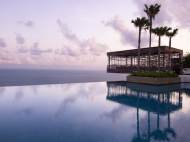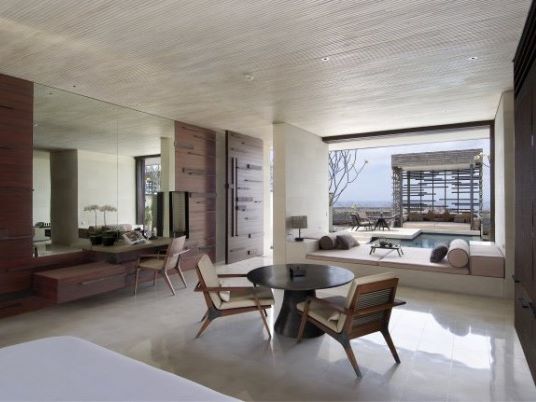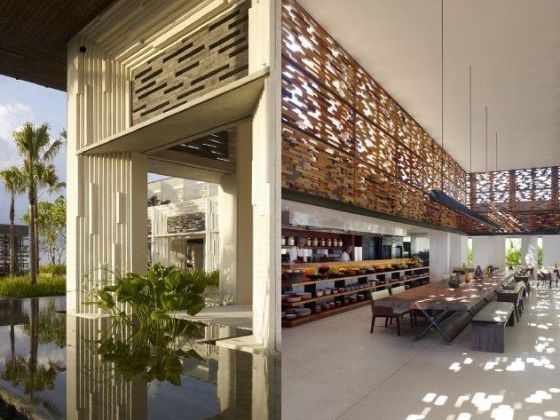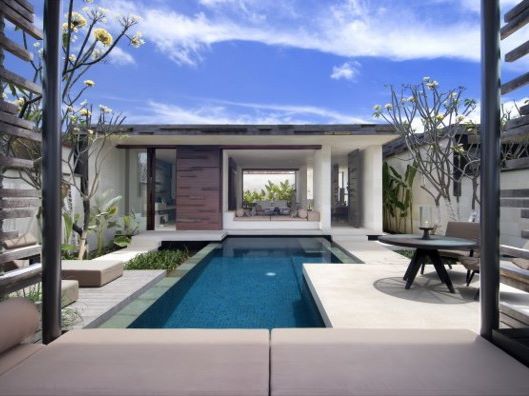Green architecture – Alila Villas Uluwatu eco resort
 The beautiful Alila Villas Uluwatu eco resort is located on a sloping hill in Bali’s Uluwatu region on the Southern Bukit Peninsula of the Indonesian island. It is the first of its kind to achieve the highest level of certification for Environmentally Sustainable Development (ESD) and is designed for the Green Globes GG21 standard. Designed by WOHA, it’s a mix of traditional Balinese pavilion architecture and rural landscapes with a modern and luxurious touch.
The beautiful Alila Villas Uluwatu eco resort is located on a sloping hill in Bali’s Uluwatu region on the Southern Bukit Peninsula of the Indonesian island. It is the first of its kind to achieve the highest level of certification for Environmentally Sustainable Development (ESD) and is designed for the Green Globes GG21 standard. Designed by WOHA, it’s a mix of traditional Balinese pavilion architecture and rural landscapes with a modern and luxurious touch.
Indoor and outdoor spaces blend together as verandas, canopies, bridges and passages weave through the resort. The architects drew inspiration for the stone walled court yards from the local farmer’s buildings, and the overall design is a fusion of low-slung vernacular Indonesian architecture and modernism. Terraced low-pitched roofs
were developed using Balinese volcanic pumice rock, a naturally insulating material
which can also support local ferns and succulents.
The villas are placed to follow the natural contour of the gently sloping land, leaving much of the local vegetation and natural formations intact and providing each with a view of the Indian Ocean. The relationship between the buildings creates unique corridors and vistas, adding to the intimacy of the grounds. The resort has 52 one-bedroom villas along with 5 cliff-side three bedroom villas and 25 private villas, each with its own pool and private pavilion perched above the Indian Ocean.
Power is currently provided by biodiesel generators powered by organic waste from the resort, but the site will eventually use electricity generated from wind farms on the peninsula. The usage of low energy lighting lowers the energy conception. The villas use natural ventilation instead air-conditioning, since they are open toward the ocean to scoop up the prevailing breezes.
The pools use saltwater rather than chlorinated water. There is an extensive grey water system combined with a rain water cistern under each villa that provides water for the toilets and gardens. A series of bio-swales and rain gardens throughout the development manage storm water, and even the sewage water is reclaimed onsite. The domestic hot water is heated by heat pumps.
Construction materials have all been sourced locally. The walls utilize stone from the actual site taken from the road cuttings, while all other materials are either from Bali or the neighboring island of Java. The sustainable timbers which were used include coconut and bamboo. The limestone for the walls is reclaimed from excavations on-site, and the extensive use of reclaimed and locally-sourced ironwood graces the doors, cabinets, and exterior trellises and paneling. Most of the locally-inspired furniture is built on the neighboring island of Java, as are the artisan cement tiles. The landscaping consists of local drought tolerant fauna.












This is Sustainability at it’s best! These villas are so eye catching.. I really admire the creativity and design aspect. Thanks for sharing!